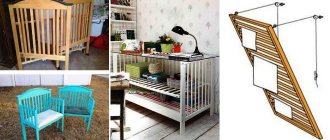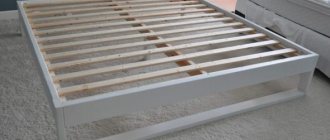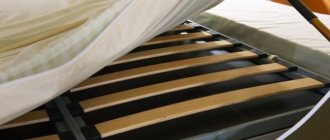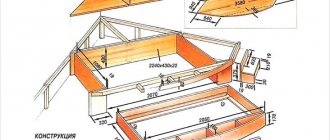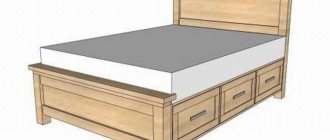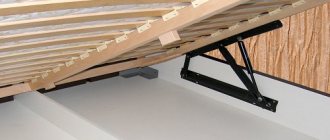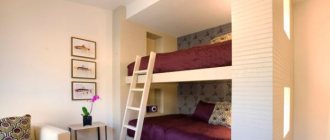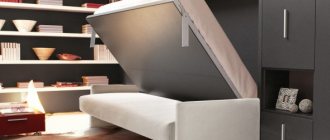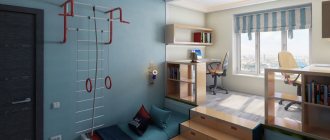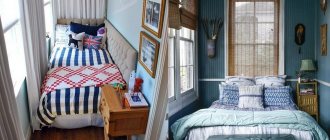It is no secret that from the moment a child is born, his safety is the main concern for loving parents. Especially when they are not near him. One of these moments is bedtime.
After all, gradually developing, the baby begins to move more and more and, fidgeting in the crib, can unknowingly harm himself or fall out of it. In order to avoid such situations, you can equip the sleeping place with a protective side.
It can be purchased at the store. But it’s much more interesting to show your imagination and make a limiter for a children’s bed with your own hands.
Store-bought barrier
It’s another matter if a child’s bed restrainer is attached to the edge. The worry is over. Parents sleep peacefully, and the baby is reliably protected from falling. The barrier is mobile, easy to remove and easy to clean.
Growing up, the child begins to actively explore the world around him, and no obstacles can stop him. Many people protect sofas with pillows, rolled blankets and blankets.
Nothing helps, the baby crawls over such fences just fine. To prevent him from breaking his head when he falls, you need to place a thick blanket on the floor.
Articles on the topic (click to view)
- Differences between an ottoman and a bed
- Anatomical bed frame
- Differences between a sofa and a sofa
- How to choose the right foam density for a mattress
- Canape furniture: what is it
- How to beautifully hang a picture on the wall
- The best cleaner for leather furniture
Because of such protection, the apartment is in complete chaos. But if you put a border-limiter for a children's bed, then this problem would never arise.
This useful item can be used at the dacha, at a party, in a train carriage, or in a hotel.
Do-it-yourself soft baby bed restraint
For newborn children, they mainly use soft bumpers, which are filled with foam rubber or padding polyester, lined with fabric on both sides. It is advisable to choose natural and hypoallergenic material.
Such a barrier is secured with Velcro or ties sewn around the perimeter of the rectangle. The number of sides can be chosen as desired.
Many people install strips on all four sides of the bed to prevent the child from hitting the wooden bars.
Expert opinion
Romanova Ksenia Petrovna
Interior design expert and fabric store manager
It is very easy to sew a soft children's bed restrainer with your own hands. To do this, you need to carefully measure the length of the side and think about what height to choose for the future barrier.
It depends on the child's activity. Buy the necessary materials: cotton fabric, padding polyester, Velcro tape, piping.
Cut the padding polyester according to your measurements and attach rectangles of fabric cut to size on both sides. Do not forget to retreat 5 cm from the filler on all sides.
Sew all layers with a stitch, folding the fabric inward 1 cm. At the time of sewing on the machine, sew the piping around the perimeter of the material.
The barrier will have a dense and finished appearance. At the end of the work, all that remains is to add ribbons or Velcro at the corners to attach the barrier to the wooden rods.
Getting ready to sew
Any business is successful if you prepare for it properly. Of course, you can sew a bed rail to prevent falls by hand, but it will take a long time. So in any case you will need a sewing machine, even a simple one.
Tools
You also need:
- large sharp scissors;
- tailor's meter;
- tailor's pins;
- tape measure;
- iron;
- chalk or soap.
Important! To make work more convenient and the process goes faster:
- It’s better to take tailor’s scissors - with long blades, but in principle, medium-sized scissors are also suitable, as long as they are well sharpened.
- A tailor's meter is a long wooden or metal ruler. You can use a smooth lath without nicks.
- Tailor's pins are sold in a sewing store. They are needles with heads in the form of a loop or ball.
- In the same department you can buy a centimeter, and it doesn’t matter at all whether it is one-sided or double-sided.
- The chalk is needed in such a color that the mark is clearly visible on the fabric. The same applies to soap.
Materials
Do-it-yourself bed fencing can be of several types.
Decide what kind of side you will sew - with or without a removable cover. In the first case, you will need two types of fabric, in the second - one. Well, the amount of material, accordingly, will be different.
Important! A removable cover is more convenient because it can be washed separately from the rest, and this, you see, is much faster and easier.
In addition, do not forget to buy:
- sheet synthetic winterizer;
- interlining;
- ready-made bias tape or material to make it;
- a long zipper (45-50 cm), if the side has a cover;
- cord;
- decoration elements - bows, satin trim, piping and other decor at your discretion.
Important! Before cutting new cotton fabric, it is necessary to wash or wet it and dry it with a hot iron, otherwise it will shrink after the first wash.
Fabric calculation
The amount of material directly depends on what kind of side you are going to sew:
- around the entire perimeter of the crib;
- one long wall and two short ones;
- one long wall and one short;
- only along the length;
- separate bumpers for each wall.
Important! The side that will be applied to the long side may also not be solid, but consist of two or three sections.
Making a barrier from plastic pipes
A barrier-limiter for a children's bed can also be made from plastic plumbing pipes. You will need a special tool to cut such products, pipes of small diameter and connecting corners of the same cross-section.
Using this scheme, take from 5 to 7 straight tubes of the same size, cut small connecting ones up to 20 cm, and assemble the structure using corners of different configurations. Straight sections of the barrier are secured with T-shaped corners, the edges with L-shaped corners. To attach the holder of the future barrier, choose them with 4 holes.
The result is a smooth and rounded product. It is easy to wash and easy to make.
Foam tube construction
The lightest and simplest limiter is a design made of dense insulating foam pipes. You can fit one piece on both sides of the bed, connecting them under the mattress with ribbons.
If a larger barrier is required, then you need to take 3 pipes and also tie them together or fasten them with thick gray tape. The design is easy to assemble; even a baby’s mother can do it.
The products are quite soft, so a child will not feel pain when hit with a foot or hand. At the same time, the foam rubber is elastic and does not deform when pressed.
The parts can be easily disassembled and washed.
Having made a barrier for the bed themselves, parents can be absolutely calm about the safety of the baby. A self-made limiter will serve for a long time, reliably, and its cost is lower than a purchased one.
Making a single wooden crib for children from 3 years old
The frame of the structure for a child includes a base and backrests, which is clearly shown in the drawing of the bed. The width and length of the product are determined by the dimensions of the mattress. The bottom of the bed should be no more than 35 cm from the floor, which will allow the child to climb onto it without effort.
The frame is made of two crossbars, which are made from edged boards measuring 50x100 mm. The required length of the product is measured with a tape measure, which is indicated with a pencil. According to the mark, two boards of a given size are sawn off using a jigsaw. Glue is applied to the side of each crossbar. Using self-tapping screws, 25x50 mm strips are fixed in these places for attaching the lamellas, and they should be 10 cm shorter than the crossbar.
Single children's bed with sleeping place 850x1935 mm
How is the base prepared for the mattress of a children's bed from 2 years old? To do this, boards are cut from slats (20x20 mm), the length of which corresponds to the width of the mattress. Their number is determined based on the complete filling of the base space. Products with a stop are attached parallel to each other to the crossbar strips using self-tapping screws. The step between them should be no more than 10 cm.
Then you need to sand all the holes for the fasteners. In the outer slats there are cutouts for the legs of the bed, which are made from timber measuring 50x50 mm in the amount of 8 pieces. The four elements under the headboard should be longer than those under the footboard. The blanks are glued together in pairs and fixed with self-tapping screws.
Creating bed side elements for children from 3 years old
The next step is to use an electric drill to make holes for dowels in boards with a 25 mm wide groove, which are used to make the footboard and headboard of the structure. They are drilled into the ends of the planks. You should be extremely careful when making holes, which should be located at the same level on all planks. They need to have the same depth, which is equal to ½ the length of the board.
The headboard and footboard of the bed can be made from solid pieces of chipboard or MDF. The first element is longer than the second. The width of the parts is determined based on the value of this parameter of the mattress, to which is added the double thickness of the wall of the longitudinal bars of the bed frame. Products can have a different shape of the end part, which can be round or wavy. If the side elements of the bed are made with railings, then another 25 mm should be added to the width of the product.
Holes for edgings in the bed parts are made using a drill
If wooden boards are used to make the side elements of a bed for children over 2 years old, then the following sequence of actions is required. Parts of equal length are cut from bars measuring 25x50 mm. They are inserted into the grooves of vertical boards filled with glue. The legs have holes for dowels. They house the side structural elements. The parts should be pressed tightly, excluding distortions and cracks.
Having made the vertical supports of the side elements, they should be tied with a frame around the perimeter to create a wooden roof. The last step is to attach the ridge beam, which will connect the base of the bed-house structure with your own hands. After all the parts of the product have been prepared, it is time to assemble them. Each element is first checked for chips and gouges, which are sealed with a putty mixture, and the surface is sanded to a smooth state. Next, all parts are treated with a primer or stain. After they have completely dried, the surface of the products is coated with paint.
Main varieties
Expert opinion
Romanova Ksenia Petrovna
Interior design expert and fabric store manager
The stationary borders-limiters have shaped cutouts that are used by babies as a stop, allowing them to climb into the crib without the help of adults
For very young children, a barrier that completely covers the side of the bed is recommended. In addition, it should be high enough so that the child cannot fall over or climb over it.
For older children, a small limiter is sufficient, the purpose of which is to prevent accidental falls in their sleep. Such barriers usually cover only part of the length of the bed, and are often made retractable for convenience.
A removable children's bed restraint is considered an ideal solution for arranging a sleeping place
A common option is a removable restraint for a child, which can be conveniently removed when it is no longer needed. This removable barrier will also be indispensable if you are traveling with small children - you can easily take it with you and install it on any child or adult bed.
A built-in border-limiter for a children's bed is purchased along with the rest of the children's furniture
Depending on the material of manufacture, there are several types of protective edges.
- Soft - the simplest design would be a barrier made of foam rubber or padding polyester rolled into tubes. The resulting rollers are attached to each other, gaining the required height of the side. For more convenient care and an aesthetic appearance, such a limiter is covered with removable covers that can be washed in a machine. Such structures are usually attached with Velcro or ties to the bed mattress.
Beautiful soft side for a girl's bed
A net is a fairly effective way to protect your baby from falling during sleep. It is necessary to make sure that the material is strong; the child should not tear or push through the mesh with his weight. For fastening, you can make a frame from wood or metal slats.
Protective mesh on a metal frame
Plastic - such a barrier can not only be purchased, but also made independently. To do this, you will need ordinary plastic pipes for plumbing - they are easily cut and fastened together using corners. The result is an easy-to-use and neat-looking limiter that fits well into any children's room. The advantage of the design is the ability to disassemble it at any time, as well as good tolerance for wet cleaning.
Limiter-barrier for a children's bed made of plastic pipes
Wooden is the traditional option, the most labor-intensive, but best suited to a classic interior. This barrier is also characterized by the greatest strength and durability. A wide variety of designs and designs are possible. A wooden stopper is usually painted to match the color of the furniture, and decorative design options are often used.
Wooden side for baby's bed
Metal side limiter for loft bed
It is quite easy to make a barrier of any type yourself, it will not require large economic costs, and will serve no less reliably than a purchased one.
Unusual DIY budget limiter
Kinds
All limiters manufactured by manufacturers are divided into stationary and removable options.
Stationary bumpers are additional elements built into the bed structure on both sides and are located along the length of the product. In cribs designed for newborns, restraints are installed along the entire length, safely limiting the space of the crib.
For older children, manufacturers produce cribs in which the restraints have shaped cutouts that are used by children as a stop, allowing them to climb into the crib without the help of adults. For children of primary school age, the built-in sides do not cover the entire length of the bed and serve more for convenience. Although in bunk beds and loft beds, the restraints perform their protective function.
Removable restraints can be installed either on one side of the bed, when installing it against a wall, or on both sides, if it is planned to be installed away from the wall, for example, next to an adult bed. In this case, they are an excellent barrier against falls on an adult parent's bed.
For the little ones, soft models of bumpers are available. They can cover the crib on four sides, or they can only be attached to two long sides. Soft stops installed on the side are rectangular in shape. There is also a protective cushion cushion on sale, most often in the shape of a square. This limiter is attached to the slats of the crib using ties.
Decoration
Homemade limiter, with removable fabric cover
The limiter, made of wood, looks aesthetically pleasing; it is enough to polish or paint it with varnish so that there is no risk of getting a splinter. If plywood or chipboard was used, the side must be decorated.
A soft cover or case is best. If you lay padding polyester on the inside, the child will be protected from accidental blows during sleep.
Protective edge against falls, decorated with fabric
The limiter can also be coated with a special paint for wooden surfaces.
Do-it-yourself wooden barrier-limiter for a bunk bed
DIY bed railing to prevent falls
It is no secret that from the moment a child is born, his safety is the main concern for loving parents. Especially when they are not near him. One of these moments is bedtime.
After all, gradually developing, the baby begins to move more and more and, fidgeting in the crib, can unknowingly harm himself or fall out of it. In order to avoid such situations, you can equip the sleeping place with a protective side.
It can be purchased at the store. But it’s much more interesting to show your imagination and make a limiter for a children’s bed with your own hands.
Do you need a bumper?
Not all young mothers believe that something else needs to be added to a baby crib, if it has a lattice. When they themselves were growing up, of course, there were no special bumpers. Yes, but there were extra pillows and folded blankets that were placed in the crib to protect the baby from possible unpleasant surprises. So why not buy or make an item that will replace the means at hand?
A bed rail is needed because:
- the baby will not fall out of bed;
- an arm, leg or even head will not get stuck between the bars;
- the child will fall asleep faster if there is nothing to distract him;
- If you make removable pictures, the owner of the crib will find something to occupy himself even in his waking moments.
Important! For a newborn, additional protection is not really needed, but for a child who has already begun to sit up, crawl or stand up, it is simply necessary. In addition, you can make bumpers that will become a real decoration for the nursery. As for the need to approach the child, such an addition will not interfere with this at all.
What should the height of the limiter be?
Not the last criterion is the height of the side. It directly depends on the age of the child:
- For babies who have not yet begun to stand on their feet, it is 70 cm;
- If the child begins to rise, then in order to protect him from an unexpected fall, the height of the protection should be 90 cm;
It is also worth adjusting the length of the protection. The smaller the child, the more space the protection should cover. Therefore, for babies it is better to make a little thing that completely covers the long side of the crib. And when he grows up, limit the space partially.
Peculiarities
A bed restraint is a protective barrier that prevents the person on the bed from falling. Such devices can be built-in, that is, the design of the bed provides for the presence of such a barrier in advance.
You can also buy a limiter separately if you need it. It is clear that their color variations are also varied.
You can also choose the material from which the product is made based on your tastes and preferences.
Dimensions
If we talk about the size of the side, then this question directly depends on the age of the child. Young children, as noted above, need high restraints. So, for a crib measuring 70x120 cm, a side with a height of 70 cm will be optimal.
Older children need curbs to prevent them from falling while sleeping.
The size of the bed for children of this age is 70-95x150 cm. The optimal size of the limiter in this case is up to 30 centimeters.
A big child, in principle, does not need a limiter. As a rule, these are teenagers, and the border on their bed, rather, carries a certain design idea. For such children, beds up to 200 centimeters in length are purchased and the side usually takes up no more than a third of the bed.
Reviews
Most parents who purchased crib restraints for their children were satisfied with this purchase. Many agree that restraints not only protect the child from injury, but also perform a protective function in relation to the environment.
In addition, many parents note that their children love to look at the pictures on the sides and react to them almost from the first month. Most mothers note that caring for soft sides is not at all burdensome; they can be washed very well.
Color solutions
There is no friend for taste and color, as they say. The color scheme of the bed limiter, as well as the bed itself, depends entirely on the flight of your imagination, since there are a great many of them on the market.
But parents traditionally prefer to purchase pink for a girl and blue for a boy. Designers also recommend taking into account the general style of the room and the colors of the main furniture, so that the purchase does not deviate from the overall design idea of the room.
Review of the best manufacturers
Expert opinion
Romanova Ksenia Petrovna
Interior design expert and fabric store manager
Tomy bed restraints are available in pink and blue. The barrier is lined with soft fabric so that the child does not get hurt when touching it.
The limiter is installed under the mattress, the width of which should be from 70 to 90 centimeters. The barrier is held in place by the weight of the mattress and the sleeper, and has a 7-centimeter bend at the other end to prevent slipping from under the mattress.
The child can put his favorite toy in the pocket located on the barrier. If desired, it can be folded down to provide access to the child.
The price of such a device is approximately 3,000 rubles.
The compact folded size has a Babies and is suitable for those who like to travel with a child. The size of the device is 140 x 50 centimeters and is suitable for children aged three to five years.
This barrier is attached above the mattress using a unique fastening system, thanks to which it can be removed very quickly. The bright design of such a side will appeal to most little ones.
Baby nice side is made of cotton material. The Periotec filler used in this product is an environmentally friendly material. The product serves to protect the baby’s arms and legs from being pushed between the slats of the crib and from drafts.
Where to start the creation process
Everyone knows that children never sit still. Therefore, the children's room should be the safest place in the house. Those. It is necessary to exclude objects that could injure the baby (for example, a nail or an ordinary screw that is not driven in completely).
Diagram of crib sizes for a newborn.
In addition, it is advisable to equip it with a removable sidewall (the so-called decorative side). This will help the child climb into his bed on his own, without the help of adults.
What is required during the construction process? This:
- electric drill and drills;
- milling cutter (can be manual);
- plane;
- rasp;
- roulette;
- square;
- hacksaw;
- pencil or marker;
- hammer;
- level;
- vayma (glue blanks);
- brush;
- screwdriver
From building materials:
- nails and screws;
- epoxy adhesive;
- furniture plugs;
- plywood sheets;
- corners for connecting crib parts;
- children's mattress;
- stain, varnish;
- edged board (4 cm) and bars (3x5 cm).
How to attach?
The sides on the market are completely different both in appearance and in the way they are attached. The simplest fastening options involve holding the limiter using the weight of the mattress itself and the weight of the person sleeping on it.
As a rule, these are metal tubes, one or two, that are installed under the mattress. At the end, the arc has a bend of approximately 10 cm.
It is needed to prevent the barrier from slipping out from under the mattress.
In other cases, the restraints are attached to the bed frames.
It is clear that such models of limiters are suitable for wooden beds with drawers higher than the sleeping area. Such limiters are mainly fastened with bolts, when turned, the barrier strips installed on one side and the other of the drawer are compressed. It is necessary to rotate the bolt until the compression of the bars ensures a stable position of the limiter.
Other fastening options involve completely encircling the mattress. There are barriers that are installed on top of the mattress.
Soft borders are fastened using regular ties or Velcro.
Criterias of choice
When choosing a bed restrainer, you should pay attention to the purpose of the side and take into account the real possibilities. The main criteria when choosing a protective system are:
Age of the child - to care for a small child you will need a functional bed with guards, and the smaller the child, the more reliable the protection system should be. If the child is highly mobile and can carry out playful activities in bed, fall guards also serve the function of preventing bruises and injuries. It is advisable to create them soft. If you need to create a protection for an adult's bed, you should first think about the purpose of the fence. Railings for the disabled serve to create convenience when climbing, so they must first of all be strong and detachable. There is no need to create foam cushions for them. The main purpose of softening elements is to protect the child’s head and body from bruises; Bed size - when making or ordering a child bed restrainer, you must measure the length and width of the mattress, since not all models are made to standard sizes. Removable barriers can be used to cover the entire length of the side of the mattress in a child's bed and to limit the horizontal space in which the child is forced to sleep and which needs to be protected; Room design - if this criterion is important when choosing a protective system, it is recommended to select protection taking into account the design of the children's room
But when installing a protective system, first of all you should pay attention to the reliability of the installation.
An important factor when choosing restraints is also the financial capabilities of parents. Homemade options do not require significant financial costs, but their production requires a lot of time and effort. Pre-fabricated barriers are sometimes expensive and require little construction skills to install, but they offer a high level of protection and reliability.
When considering, selecting, making or purchasing and installing bed guards, much attention is paid to the intended purpose of the bed rail and the weight of the sleeping person. These parameters are the main ones when choosing protective systems
Based on financial capabilities, personal preferences, room design and the features of each specific design, the most optimal option for each specific bed is selected. When traveling frequently with small children, it is recommended to choose removable barriers that are installed on different horizontal surfaces. They will serve as reliable protection for the child wherever he sleeps.
If the baby constantly sleeps in his crib, it is recommended to install a stationary side that is attached to the base of the bed. It will serve as protection for the child not only during sleep, but also during play. The child can stand up, holding the side with his hands and leaning on it. To protect the sleep of teenagers or adults, protective systems are chosen that cover only part of the side of the mattress, since they look more aesthetically pleasing, but fully fulfill their functional purposes.
How to do it yourself?
If the design of your bed does not provide for a side, but you still need one, you don’t have to resort to buying one, but make it yourself. Moreover, this business is quite entertaining and not so labor-intensive. And your child will always remember such care.
To make a wooden barrier, you will need: four slats, planks or shaped blanks straight from the inside and two long wooden blanks. It is clear that the four blanks must be identical and strong enough, because they will bear the entire weight of the product and with their help the limiter will be attached to the bed.
To prevent such fastenings from scratching the surface of the bed and sliding, it is possible and even necessary to rubberize them on the inside. Two blanks are attached perpendicular to one long rail, and two to the other.
This way you get two U-shaped products. These two products need to be fastened together with bolts and put on the bed frame.
Screwing in the bolts must be continued until the compression of the two halves of the limiter ensures its stable position.
If you have in your arsenal a tool for cutting plastic pipes, as well as the pipes themselves, you can easily make your own version of the limiter. To do this, you will need 8 tubes of the same size, which will provide the height of the barrier and 14 tubes, the size of which depends on the distance you want to get between the slats, 12 T-shaped corners and 4 L-shaped ones.
Expert opinion
Romanova Ksenia Petrovna
Interior design expert and fabric store manager
This product is assembled quite easily and quickly, like a construction set. Such a limiter will not have sharp corners.
If desired, it can be covered with soft fabric.
You will learn more about how to make a bed restrainer with your own hands in the following video.
A low-cost manufacturing option is to make a barrier from pipes.
Moreover, if you need a high barrier, you can stack the pipes into several floors with ordinary tape. Such a limiter is secured under the mattress with strong tapes. The advantages of the product are that it is a budget option, it can be easily washed, the design itself is very light, assembly is not difficult, and the soft sides do not injure the child.
If your child is very small and you need a soft border around the perimeter of the crib to avoid injury to the baby’s arms and legs, you should give preference to natural fabrics that will not cause allergies in the baby. The size of the fabric should match the size of the sides of the crib. You can use synthetic winterizer as a filler.
This way you will have thin pillows that match the width and length of the bed. They are fastened with ties or Velcro, which must be provided in advance in the design of the side.
Buy or sew?
In children's goods stores you will find many additional accessories for cribs. For example, for a three-year-old child, you can easily find modular furniture on sale, when additional protective devices, such as the same sides or soft stands, are simply included in the kit.
It is better to buy a new item from a good manufacturer. True, it may cost a little more than in a consignment store, from a random seller, or secondhand. But you can check all certificates.
If you buy a bumper at a second-hand store or second-hand, inspect it carefully:
- it must be clean;
- have no visible mechanical damage;
- the filler must be free of lumps;
- The bumper should not emit foreign odors.
Important! By the way, all these requirements also apply to children's products purchased in a regular store. In any case, the item must be without visible flaws and smell like a new children's item. If you have doubts about the quality of the product offered or you are limited in funds, it is better to sew the border yourself.
Materials
Restrictors that have a protective and decorative function can be made of various materials.
Soft restraints are made of durable cotton fabric. The filler used is foam rubber, padding polyester or other soft and voluminous material. Sintepon is a soft hypoallergenic material with high thermal insulation properties, suitable for children from 0 to 6 months.
Soft, but at the same time elastic foam rubber is most often used as a filler. For convenience, it is placed in removable covers.
As a rule, such fillers are decorated with various inserts or applications.
Sometimes in such sides some hard material is chosen as the base. A solid base is upholstered with fabric and filler and the result is a more durable, but at the same time comfortable and safe option.
Solid sides can be made of wood, plastic or metal. As a rule, they look like either a solid canvas, or a slatted type, or a canvas with figured cutouts.
- Wooden options have a fairly durable structure, are environmentally friendly and can be installed in three different positions. Manufacturers use species such as oak, pine, maple or ash. All products undergo careful processing. They must be sanded and coated with varnish or paint that does not contain lead or other harmful components.
- The metal sides are quite reliable and durable. Metal is a cold material and therefore is most often used in combination with other materials.
- The design of combined sides can consist of various materials: solid wood, chipboard, plastic, metal in combination with soft foam rubber and fabric.
Colors and design
Today, manufacturers produce bumpers of various shapes, materials and colors. When choosing, parents most often focus on the gender of the child. For girls, a pink side is most often purchased, and for boys, a blue option. But in addition to the gender of the child, you need to focus on the style of the room and the color of the furniture.
If desired, you can purchase a stopper of a simple rectangular shape, but decorated with pockets, appliqués and many other elements that give the product an original look. There are options in the shape of animals, fairy-tale characters, flowers and many other items.
Thanks to the wide range of colors and variety of shapes, you can choose a restraint that will perfectly harmonize with your interior, perform a protective function and simultaneously develop the baby.
Practical application of combination
Masking wall irregularities
Using this technique you can also disguise communications and details that spoil the interior. Using wallpaper of different colors, you can easily divide a room into zones without resorting to additional costs for arches and partitions.
Changing the size of the room. By highlighting one wall with bright wallpaper or a print, you can visually expand the room.
Decoration. With the help of bright accents, you can define the general idea of the entire room, set the mood for textiles and other decorative elements.
You can highlight one item and thereby make it the main one in the room, for example, use several stripes of contrasting wallpaper of the same color to highlight the bed area in the bedroom.
Manufacturers
The most famous manufacturer today is Ikea , which produces both soft and hard sides. Himmelsk model is suitable for cribs with an upper bottom position.
Product length 120 cm, height 60 cm. Attached to the crib from the inside using reliable Velcro fasteners.
The model can be machine washed and ironed at low temperatures.
The hard side of the Vicare has dimensions of 90x7.5 cm and is a rectangular strip attached to the crib using clamping metal strips. This model is suitable for older children, perfectly protecting them from falling to the floor, and at the same time does not prevent the baby from climbing into the crib on his own.
Tomy from Chinese manufacturers has been very popular lately It consists of a metal frame covered with soft fabric.
This model is suitable for children from one year old and can be installed under the mattress on a crib with a width of 70 cm or more. The part of the structure that runs under the mattress is held in place by the weight of the mattress and the baby.
If desired, the structure can be folded down using folding railings.
The longest limiter from French manufacturers has a length of 150 cm and a height of 44 cm. The Safety 1 St is made of a metal frame covered with breathable fabric. This side is the most suitable option for mattresses with a length of 157 cm or more. If necessary, it can be easily reclined.
